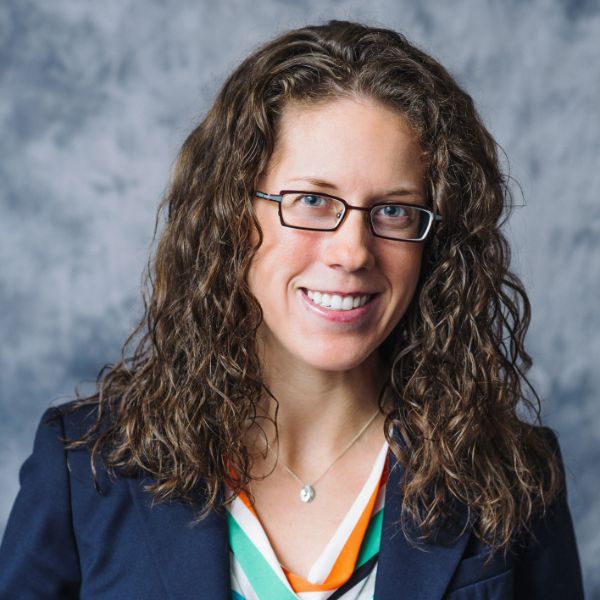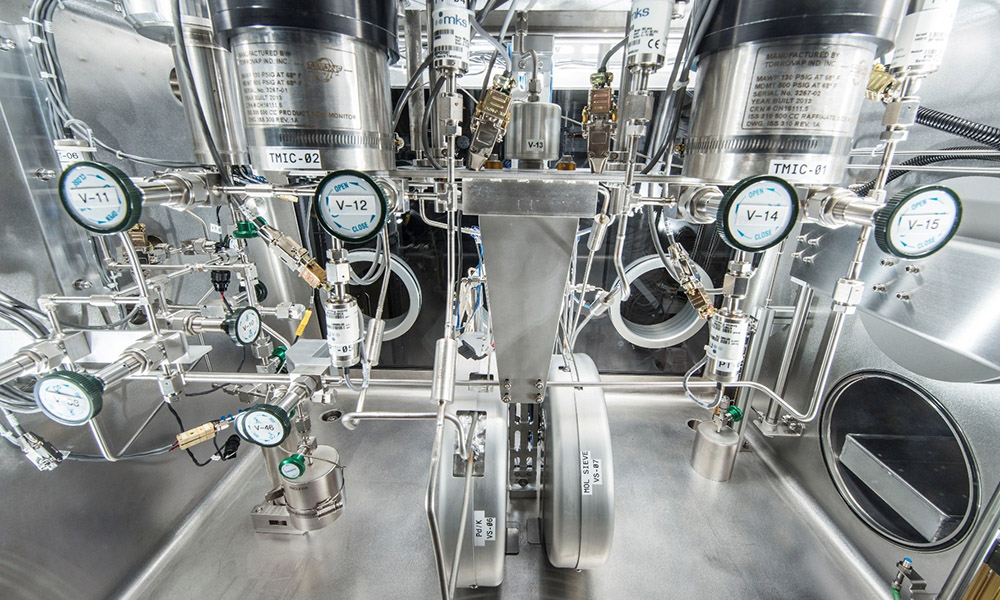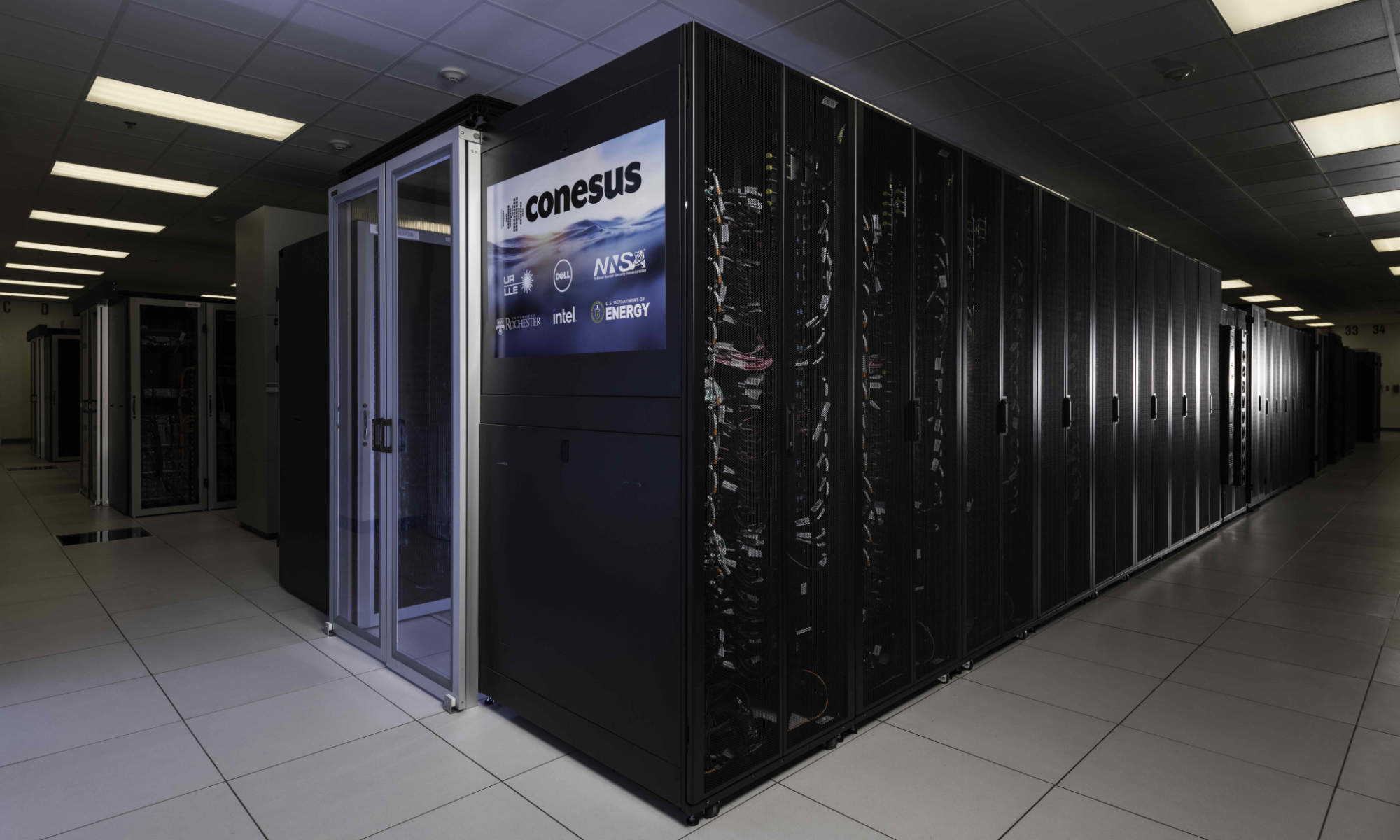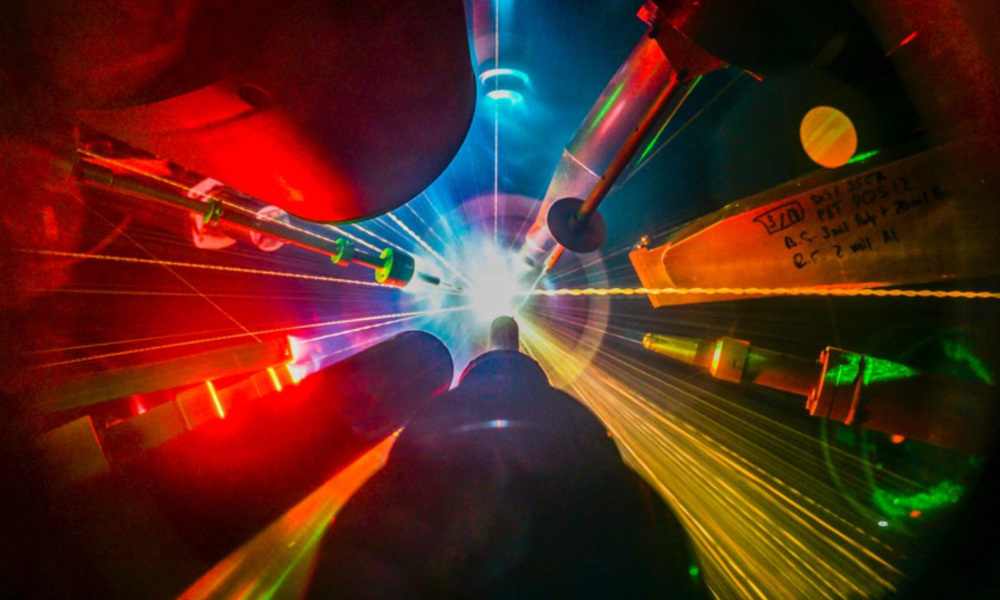The new cooperative agreement builds on the laboratory’s significant scientific productivity and contributions to national security efforts.
The University of Rochester’s Laboratory for Laser Energetics (LLE) and the US Department of Energy’s National Nuclear Security Administration (NNSA) have finalized a new cooperative agreement for more than $503M over five years.
The new agreement, covering fiscal years (FY) 2024 through 2028, will allow LLE to operate the Omega Laser Facility, which houses two of the largest laser systems in academia. As NNSA’s high-energy-density (HED) user facility, LLE is a unique national resource that supports mission-critical research activities, educational experiences, and workforce preparation for NNSA’s Inertial Confinement Fusion (ICF) program, part of NNSA’s important national stockpile stewardship and management activities.
The latest cooperative agreement is the eighth one between NNSA and LLE and represents a 23 percent increase in funding over the previous agreement. The renewed funding reflects LLE’s productivity and contributions to NNSA’s mission over the last five years, including the laboratory’s significant scientific progress in pursuit of direct-drive fusion, its expanded education mission, and needs for sustaining the facilities for the future. In the wake of Lawrence Livermore National Laboratory scientists’ achieving ignition, or a fusion reaction that creates a net energy gain, there is an added emphasis on exploiting the new results for national and energy security.
“We’re grateful for NNSA’s renewed and continued recognition that LLE is one of the nation’s outstanding resources to conduct research that transforms scientific and academic fields,” says University President Sarah Mangelsdorf. “We’re proud to partner with NNSA on some of the great scientific endeavors of the 21st century as well to help develop future generations of leaders for some of the nation’s storied academic and research institutions.”
The LLE is home to more than 440 scientists, engineers, staff, and 230 students who currently utilize facilities at the LLE for their research. Direct employment (including LLE staff and employment spurred directly by LLE’s New York state purchasing and visitors) totaled 480. As estimated by the nonprofit Center for Governmental Research, the spending of LLE and its employees contributes to an additional 500 spillover jobs for a total impact of about 980 jobs across Upstate New York, more than $65 million of annual income to workers, and $3.7 million in revenue to state and local governments.
Established by Congress in 2000, NNSA is a semi-autonomous agency within the DOE with core missions to maintain the nuclear stockpile, monitor and promote nonproliferation, power the nuclear Navy, and respond to nuclear and radiological emergencies.
Expanding operations, science, and education
The FY24–28 cooperative agreement empowers LLE to continue working with the scientific community to develop novel diagnostics, experimental platforms, and laser technologies; to develop and demonstrate the physics required for laser-direct-drive ignition, robust target performance, and scaling to high yield; and to expand LLE’s role in HED physics research.
“Anyone who has seen the recent movie Oppenheimer knows the importance of bringing together great scientists to protect national security,” says Chris Deeney, director of LLE. “This was true in the last century and it remains true today. The new cooperative agreement between the University and NNSA ensures that LLE will play a key role in educating generations of scientists, advancing technologies, and pioneering new scientific understanding.”
As the only ICF research laboratory of its complexity at a US university—offering science, facilities, engineering, and education at scale—LLE is ideally situated to continue advancing NNSA’s mission. “Many researchers from the national laboratories and academia come to LLE each year to benefit from our innovation and agility while working collaboratively with our tremendous team to test new ideas at a relevant scale,” says Deeney.
As home to the DOE’s National Laser User Facility (NLUF), there are 794 registered users from other universities, industry, and the national laboratories who carry out fundamental research, training, and education at LLE’s facilities. More than 500 scientists have earned graduate degrees with research and education accomplished at the LLE, and more than 100 graduate students are currently studying or conducting research at LLE and its facilities.
As part of the new agreement, LLE will also expand its long-established educational activities to include a new emphasis on training technicians, engineers, operators, and educators to help build and diversify the nation’s long-term workforce needs for national security. Beyond access to the LLE laser facilities, LLE will also team up with academic institutions across the nation—including locally with SUNY Geneseo, Rochester Institute of Technology, and Monroe Community College—on research, development, and education. “We’re developing a pipeline of great students to be competitive for the amazing careers at the US national laboratories and here at LLE,” says Deeney, “and we have more than fifty of our researchers, graduate students, and staff who attended SUNY Geneseo, RIT, and MCC.”
Support for the cooperative agreement
Government officials added their support for the latest cooperative agreement:
New York Governor Kathy Hochul: “Congratulations to the University of Rochester’s Laboratory for Laser Energetics on securing this continued partnership with the NNSA and procuring this important federal funding. This collaboration further reinforces the U of R’s global reputation as a leader in forward-thinking discoveries. Together with President Biden’s administration, New York State remains committed to supporting cutting-edge R&D investment and building on our reputation as a global leader in next-generation energy industry applications, efforts that are serving as a catalyst for economic growth.”
US Senator Charles Schumer: “I’m so glad that the Department of Energy’s National Nuclear Security Administration and University of Rochester’s Laboratory for Laser Energetics have reached this new cooperative funding agreement. Their partnership is vital to allow the world-class lab’s over 400 employees to continue making substantial contributions to our national security and to give them the ability to conduct their groundbreaking work here in Rochester for years to come.”
US Senator Kirsten Gillibrand: “For decades, the University of Rochester’s Laboratory for Laser Energetics has led the nation as a premier venue for scientific research and groundbreaking discoveries. The LLE is a unique asset for the nation and for Upstate New York, and I applaud NNSA’s continued partnership with the laboratory. I am proud to support the LLE and its mission, and look forward to the many breakthroughs to come.”
Congressman Joe Morelle: “I am thrilled the University of Rochester’s Laboratory for Laser Energetics has agreed to a new cooperative agreement with the NNSA. LLE is continuing to lead the country in cutting-edge research and technology as evidenced by this renewed and increased support. Not only are they enhancing our national security, but also preparing a highly specialized workforce essential to continued scientific advancement. Our region truly is an innovation leader.”
Congresswoman Claudia Tenney: “While our adversaries, like China, Iran, and Russia, continue to ramp up their nuclear capabilities, the United States must continue to invest in research programs that support the security and effectiveness of our nuclear stockpile. I am thrilled to see the new cooperative agreement between the Department of Energy’s National Nuclear Security Administration and the University of Rochester’s Laboratory for Laser Energetic that aims to promote nuclear research in the fusion and high-energy-density space. This new cooperative agreement will be a remarkable asset to our local community and our country’s national security.”
Congressman Nick Langworthy: “I’m proud to help secure funding for the University of Rochester’s Laboratory for Laser Energetics—this investment advances cutting-edge research and reinforces our region’s position as a hub for innovation. The lab’s critical work will not only strengthen our national security but will develop the next generation of skilled scientists and engineers. This commitment ensures that our community remains a key player in shaping the future of technology, safeguarding our nation, and fostering a legacy of excellence in scientific discovery.”
About the University’s Laser Lab
LLE was established at the University in 1970 and is the largest US Department of Energy university-based research program in the nation supported by the National Nuclear Security Administration as an integral part of its Stockpile Stewardship Program. LLE has received support from the New York State Energy Research and Development Authority, and most recently, from Empire State Development.
As a center for the investigation of the interaction of intense radiation with matter, LLE is a unique national resource for research and education in science and technology. Current research includes exploring fusion as a future source of energy, developing new laser and materials technologies, and better understanding high-energy-density phenomena. In addition to its vital roles in various areas of scientific research and its support of the local high-tech economy, LLE plays an important role in educating the next generation of scientists and engineers.




